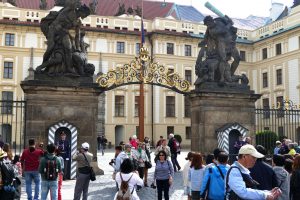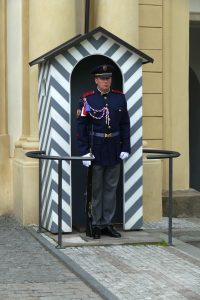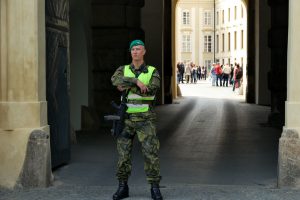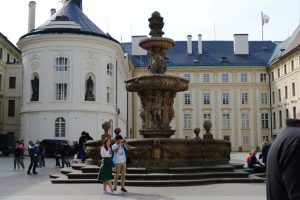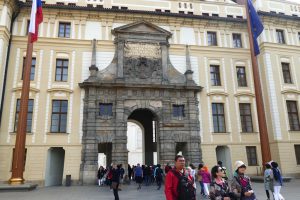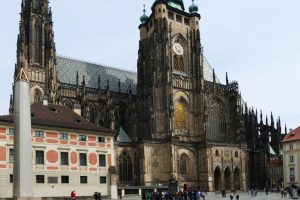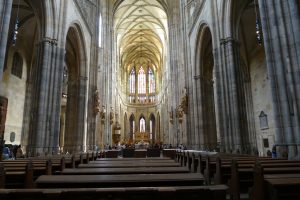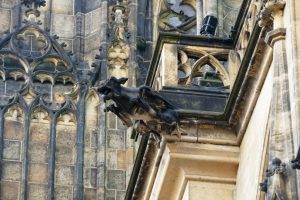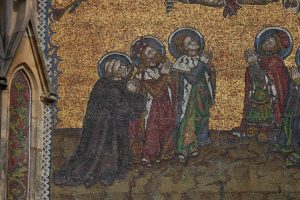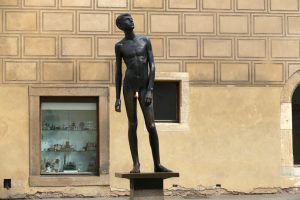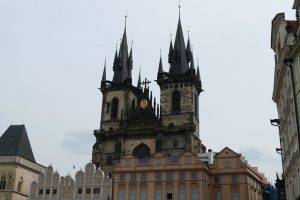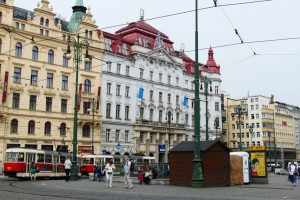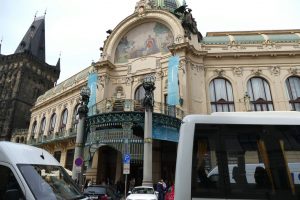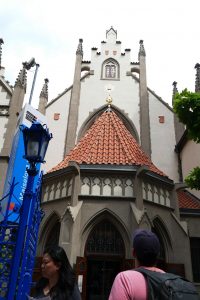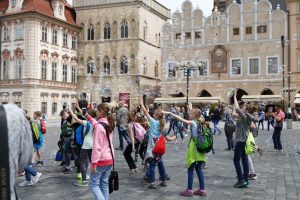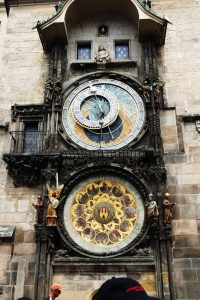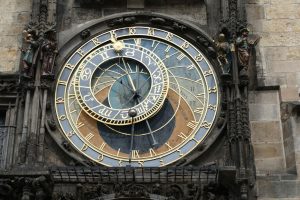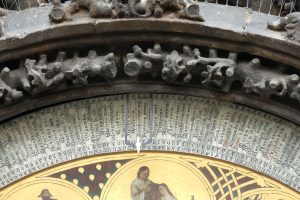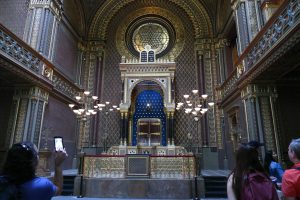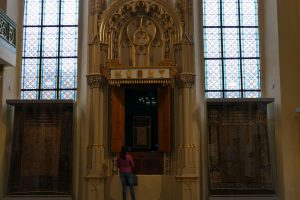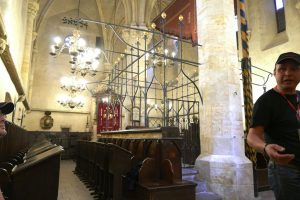Thursday 19th May
The morning was spent prowling the streets of Prague, firstly with Peter as our guide, then on our own.
Peter’s knowledge of Prague and its history was extensive, and he managed to deliver it with a running series of funny anecdotes. But through it all he put many historical events in context, and explained the role and history of the many buildings, bridges and statues.
Along the way we encountered the Prague Castle, the old town, the cathedral of St Vitus and the Charles bridge.
Prague Castle
Prague Castle is a huge sprawling castle, that includes churches fortified walls, gateways and towers, and is one of the largest ancient castles in the world. It is also includes the official presidential residence.
This was guarded by both ceremonial guards and the real deal.
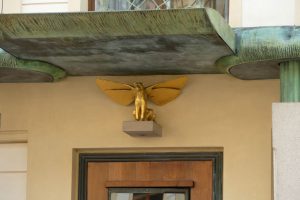
St Vitas Cathedral – inside the palace. Gives some idea of how huge this place is. A golf buggy would have been great!
On the side of the cathederal, as we left, were more decorations, gargoyles and mosaics:
Then as we were leaving, a brass statue – nothing needs to be said, OK
Old Town Square
So many things surround the square and so much happens in it:
Mounted on the wall of the old city hall is the Astrological clock. Not only does it show the time, but also phases of the moon and the day of the year (displayed as saint days). The crowd gathers on the hour to watch the animation of the figures.
Jewish Quarter
In the afternoon Peter took us on a two and a half walking tour of the Jewish quarter. Peter’s stories and humour kept flowing, not belying the tradgedy and the generosity that lay behind many of the stories.
The first synagogue was the Spanish Synagogue, which is in a Moorish style, and was built round 1700.
Then on the the Maisel Synagogue was built in 1590 by Maisel who was the Mayor, and rather well off. He also personally funded much of the restoration of the ghetto in a Renaissance style.
The Old New Synagogue (its proper name, not my bad typing – makes me wonder if there is a New Synagogue, or a New New Synagogue, but I digress) was built in the 13th century by angels (Probably Christian construction crew) and i s one of the oldest synagogues in Europe. It survived WW2 without being desecrated, and is still in use.
The Pinkas Synagogue has been turned into a remembrance to victims of the Holocaust, and their 80,000 names are inscribed on the walls. It also houses paintings and drawings by children in the camps. One of the pictures by Peter Gynt, of his vision of earth from space, was aboard the shuttle Challenger when it exploded.
Dinner
After the walk, we moved on to dinner at a Serbian restaurant.
Entree was a mixed plate of ham, cheese, dips and breads, followed by mains of a salad and huge meat platter, and finished with a traditional cake. Throughout we were entertained by a Gypsy band (a touch loud for this grumpy old man)
Finally back to the hotel for a much needed sleep.
